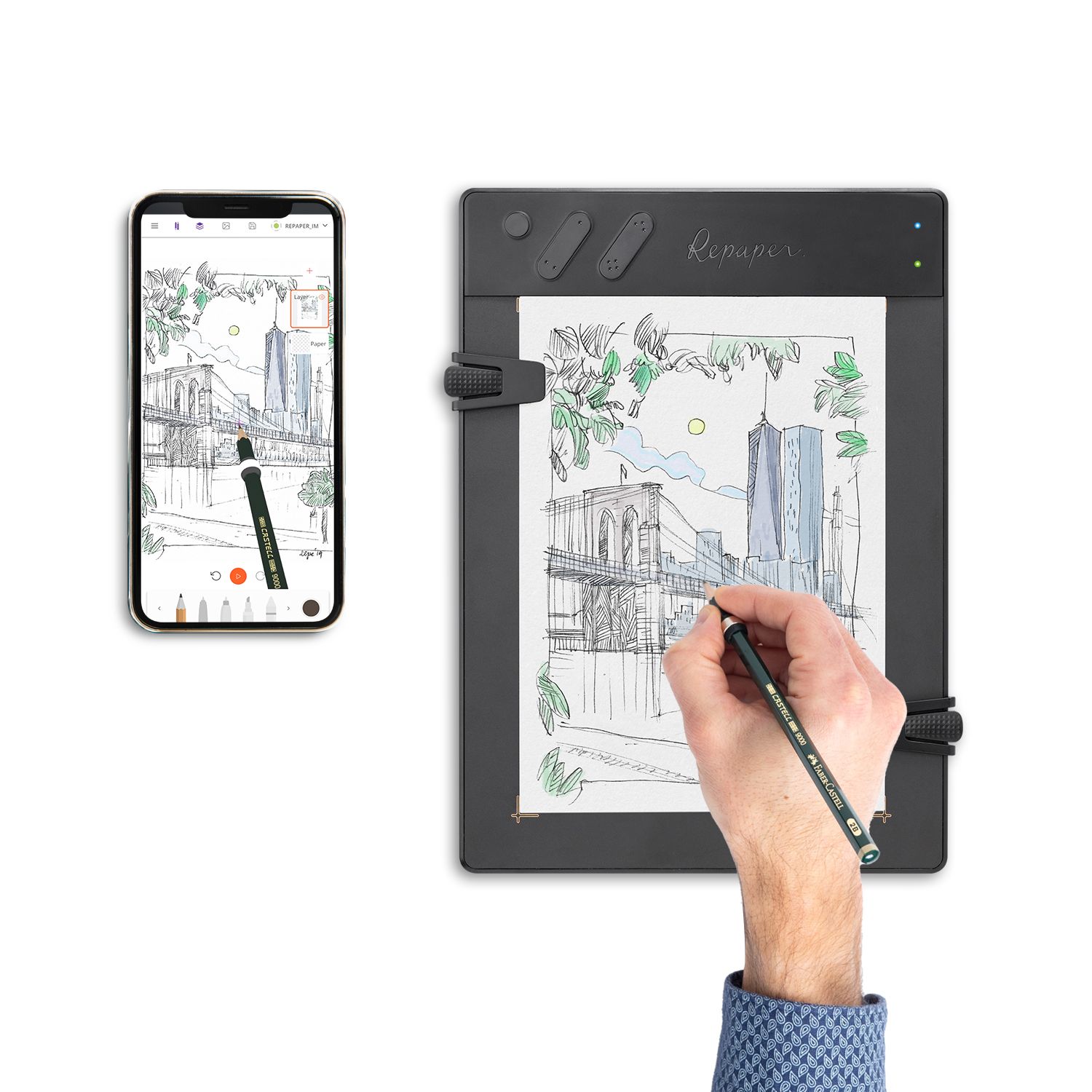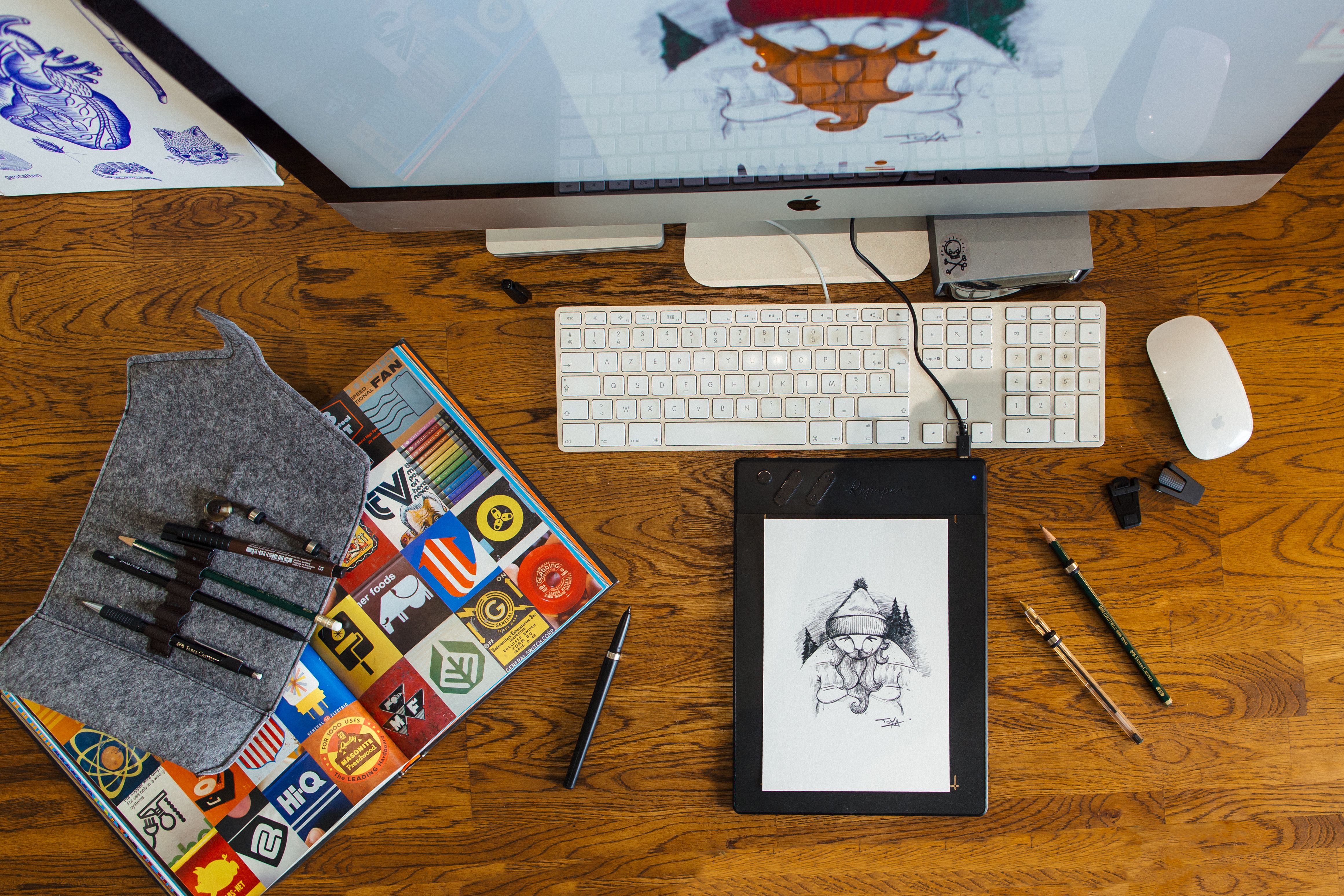
How to draw a landscape: Tips, techniques, and the right tools
Drawing a landscape is not easy. Often confused with still lifes in the same way as for photography, to have an interesting angle of view, as well as an impression of realism and life in your drawing, requires technique and rigor in the way you draw your work. We give you some tips to choose the right equipment, and discover the most important techniques to realize your first landscapes.
Which techniques to use to draw a landscape?
Define your frame.
Defining a frame for your landscape drawings requires good observation skills. On your sketchbook, make a grid of nine equal parts (with three horizontal and three vertical lines), and make a quick drawing, with simple geometric shapes, of the different elements you want to appear on your sketch. Be careful not to cut off an element at its intersections at the edge of the page, and place your point of interest on one of the center intersections of your grid lines. Following this drawing technique will allow you to draw a beautiful observational drawing later, where your subject will enter the viewer's line of vision in a dynamic way.

Respect the perspective.
In order to make a realistic landscape drawing, drawing in perspective is a must to get the result you want. In order to draw better and to easily draw the right proportions on your sketches, the easiest way is to determine where your horizon line is on your drawing. You can place a vanishing point, towards which the eye will turn, and by drawing vanishing lines towards it, with a pencil, or on a new layer, so that these can be erased later, it will be easy for you to respect all the proportions of each object. The perspective drawing will allow you to have a landscape without incoherence.

Structure your layouts and bring your design to life.
Once your sketch is done and well proportioned, in order to draw your landscape correctly, it will be essential to separate your drawing into several levels, from the first one visible to the observer, whose contours and details will be very pronounced, to the last level whose elements will appear more blurred and less precise. If you want to emphasize a more distant section of the drawing, in this case, detail this part as much as possible, and the further away you get from it, the more the rest of the drawing will lose precision in the details, a bit like a focus with a marked focal length on a photograph. Don't forget to make your drawing more dynamic, marking the shadows and the nuances and textures of each element. Indeed, a landscape is not a still life. It is first and foremost a living model, and drawing a tree, a river, or drawing a flower in the middle of nature, must be done in such a way that the viewer of your work can feel the wind or the current of the water, and that your artistic drawing is not "flat" and without interest.
To each landscape, its particularities
How to draw a mountain landscape?
Mountain drawing is definitely a good approach to start with landscapes. With its massive hills, it is quite simple to delimit the contours of each element, and to practice the proper framing of your drawing. Then, following the previous advice, you just have to make your sketch. But beware, mountains offer a lot of light and shadow, with the more or less crevassed areas of the rock. It is therefore extremely important not to miss these elements and to play with the luminosity for a realistic result.

How to draw an urban landscape?
Landscapes are not only nature, and the city is an excellent way to progress in your art. It is important to remember that a city can be rendered in a thousand different ways, as the play of light varies greatly between day and night, with artificial lighting everywhere. As a result, shadows can be more complex, as light sources can come from multiple places, and it will be important not to neglect this aspect. Similarly, a city can be recognizable at first glance. Making global outlines of buildings, or focusing on a famous building, can be an option so that people viewing your work can project themselves directly into the place you wish to reproduce. Multiply the points of view, be creative, and you will see that cityscapes have a lot to offer even for the most insatiable designers.

How to draw a seascape?
Many painters can be seen on the seaside dikes, but beach drawing is not the easiest. Indeed, the sea does not offer much relief, and it is difficult to make a work that does not appear flat and unconvincing. It is very important in this type of drawing to clearly delineate the junctions between the beach, the sea and the horizon. Highlighting massive elements such as boats, seawalls or rocks can easily give structure to your drawing. But the most important thing is to transcribe the movement of the water. To do this, you'll need to frame your design and place a recognizable wave in the center. Then make a cluster of waves on the whole surface of the sea, by delimiting the contours, then play with the shadows and the light to give an impression of movement. Don't forget to blur your water surface in order to obtain a more realistic texture, without visible contours, and then use the shadows to finalize your drawing. The best way for the beginner is to practice drawing water with a photograph where the waves remain fixed, or via a graphic software, thanks to a graphic tablet, by putting the photo on a layer, and trying to reproduce the movement of the waves by drawing over it on a second layer.

Which material to draw my landscape?
Traditional tools
For beginners, the basics of drawing are often discovered with a graphite pencil and a standard eraser. To draw a landscape, a set of pencils, a sketchbook, and a breadcrumb eraser will be an excellent start to exploring the different drawing techniques. If you feel comfortable, you can even learn to draw with charcoal, pastel or why not start painting with watercolor or oil paint, in order to discover a new way of drawing, drawing and painting being strongly related.

The essential graphic tablet
If the practice of drawing is instinctively linked to the fact of drawing with a pencil, graphic tablets are increasingly used by creative people of all kinds. However, learning how to draw easily with a graphics tablet can quickly turn out to be nerve-wracking for the beginner or experienced drawer who wants to start this new drawing practice. Indeed, between the graphic tablets with expensive and not very transportable screen, and the graphic tablets without screen not very intuitive at first sight, because of the hand-eye coordination complicated to apprehend between the computer screen and the drawing surface of its peripheral, knowing how to draw landscape drawings, very often in the open air, can quickly turn out to be complicated for anyone using such digital tools. However, there is a type of hybrid graphics tablet, such as the ISKN Repaper, which allows the user to draw directly on a sheet of paper, affixed to the surface of the graphics tablet, with a traditional pencil, equipped with a magnetic ring that faithfully reproduces all the strokes made on your favorite graphics software. Thus, no need to learn digital drawing with all the specificities related to the hand-eye coordination mentioned above. You can take advantage, with a traditional technique, of all the tools provided by graphics software such as Photoshop or Illustrator, from the use of a layer to the different types of brushes offered by the application. This way, you don't have to buy all the drawing materials you need to perfect your work. A great advantage is that with its battery and internal memory, the hybrid tablet can be used independently, indoors and outdoors. All you have to do is transfer your sketches directly to your computer when you get home, and why not color them or make a few adjustments with the features of your drawing software, thanks to your digital pen, by switching the tablet to screenless mode. The hybrid graphics tablet is then only for digital illustrations, and allows a versatility to any proof.
Conclusion
Whether it is for the city, the mountains, the sea or any other place, drawing a landscape requires a great sense of observation, and a great rigor in the effects of shadows and textures. Whether it is with a pencil or with a graphic tablet, you have to retranscribe the best of your environment by choosing the best frame, and by respecting at best the perspectives and the movements of what you have in front of your eyes.

Discover more
The 5 best video editing software
Edit and produce your most beautiful videos with the most efficient software in the field!
How to Learn to Draw: Mastering Art through Practice
Learning to draw is a long process. Discover the tips to progress and learn drawing in a fun and motivating way!
Drawing on a computer: how to draw on a computer?
Thanks to the computer, it is now possible to draw without limits and without having to spend hundreds of euros in drawing materials consumed at a high pace.
$10 discount
when subscribing to our Newsletter, for purchases over $100.
Free standard delivery
for purchase over $80
30-day returns
on all products
Secure payment
with Stripe & PayPal
Pay in 4
with PayPal
Customer service
chat with us


